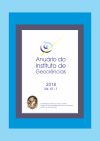The Use of CloudSat Data to Characterize The Microphysical Structure of Extreme Precipitation Events over South and Southeast of Brazil
DOI:
https://doi.org/10.11137/2018_1_15_27Keywords:
cloud microphysics, CloudSat, Remote sensing, Extreme eventsAbstract
The goal of this work is to investigate the microphysical structure of clouds formed in extreme precipitation events in south and southeast of Brazil. Seven cases were studied with data from CloudSat satellite, through its 94-GHZ profiling radar, complemented by precipitation estimates from Aqua satellite. The analyzed parameters were: effective radius, water content and particle concentration, all for liquid water and ice, creating a set of six variables. In general aspects, the results revealed events containing mainly Nimbostratus (Ns), with high values of liquid parameters, and events with Cumulonimbus (Cb) predominance, where the presence of ice plays a more important role in correlating with precipitation extremes. The profiles at the location of most intense precipitation were individually analyzed for each case, which leads to a clear distinction between two groups, one with the highest precipitation-rate cases (Group A) and the other gathering the lowest-rate cases (Group B). Group A presented notably lower values of liquid water parameters in the lower portion of the cloud. For example, at an altitude of 2 km, effective radius was around 5 μm, compared to 10 μm for Group B. As for ice parameters analysis, Group A presented relatively higher values in the upper portion of the cloud. Ice water content reached peaks between 1 and 1.5 gm-3, while only one case in Group B exceeded 0.5 gm-3. Cloud tops in Group A went up to around 14 km and between 10 and 11 km in Group B. The results found are validated by observations obtained from previous methodologies, which allowed only for local measurements. CloudSat fills the gaps and unveils the entire picture. It will be necessary to expand the number of case studies in order to find actual microphysical signature of extreme events, and this paper contributes as a starting point for future works and even operational tools.Downloads
Published
2019-09-09
Issue
Section
Article
License
This journal is licensed under a Creative Commons — Attribution 4.0 International — CC BY 4.0, which permits use, distribution and reproduction in any medium, provided the original work is properly cited.
















 Except where otherwise noted, content on this site is licensed under a license
Except where otherwise noted, content on this site is licensed under a license 